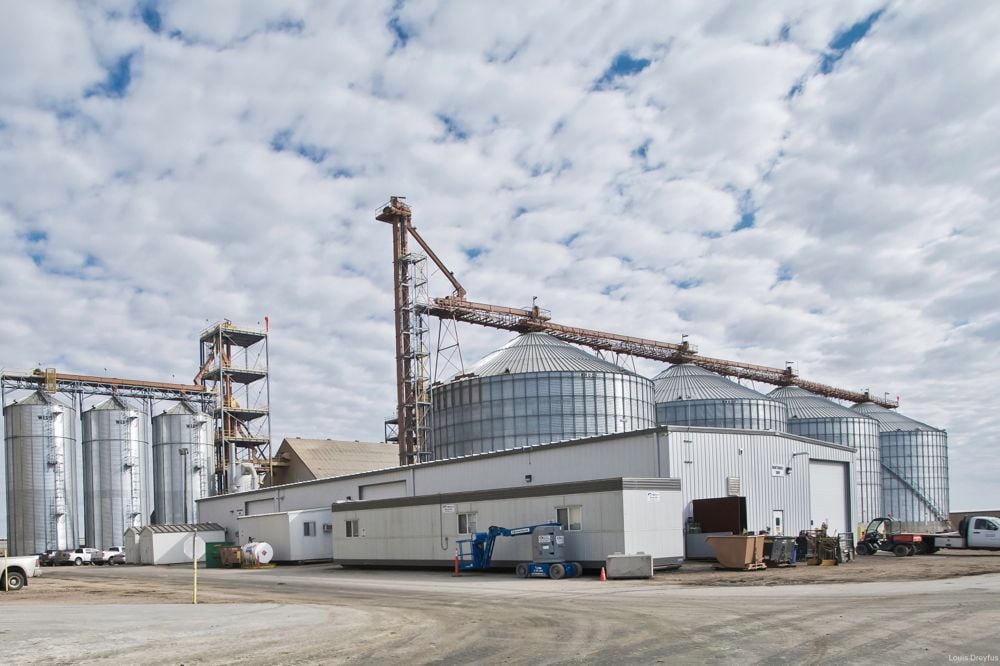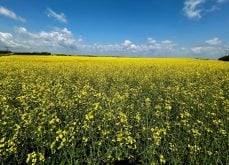A dugout on a section and a half of pasture has provided water to thousands of cattle on John Tkachuk’s farm near Piney, Man, for more than 40 years.
However, the dugout dried up this summer and turned “putrid,” Tkachuk said, after a year of minimal precipitation and scorching hot temperatures in July.
“The water has absolutely turned green,” said Tkachuk, who runs a cow-calf operation with a herd of 150 to 200 animals.
“So we were forced to drill a well, which cost about $7,500, and set up a watering system for (the cattle).”
Read Also

Louis Dreyfus posts higher volumes, lower profits in first half
Agricultural commodity merchant Louis Dreyfus Company recorded a rise in first-half sales, supported by higher volumes shipped, but weaker prices for most crops pushed down profits, it said on Friday.
Tkachuk can’t recall a summer like 2012 in his decades of raising cattle in southeastern Manitoba.
“I’ve seen it dry and I’ve seen dugouts dry up here before, but I’ve never seen pasture this tough all summer, not being able to recuperate,” he said.
“The heat was the biggest thing. I’ve never seen it this hot.”
Livestock producers in southeastern Manitoba have scrambled for the last month to find sufficient supplies of water, hay and pasture for their cattle.
In August, Manitoba Agriculture staff surveyed producers in the region to assess the impact of the drought.
Jenelle Hamblin, a forage specialist with the department in Beausejour, said hay production is down 50 percent across the region and the average rancher has lost 30 to 45 days of pasture.
“Some of these guys, in the more severe areas, were up to 60 days of lost pasture and they were already feeding (their livestock),” said Hamblin.
The survey was done a couple of weeks ago, she added.
“So, more fellows are probably in that situation today.”
The dry conditions are affecting a broad area of rangeland, which stretches east from Highway 59 and south of Steinbach to the U.S. border.
The drought, which began a year ago, has been particularly severe for producers in the rural municipalities of Piney and Stuartburn.
“This whole situation probably started last August. We had no rain at all in August and went into the fall very dry,” said Tkachuk.
Little snow fell last winter and there was minimal rainfall this summer.
“I can honestly say that we got an inch and a half of rain a week ago and that’s the only substantial (storm) since a year ago.”
Tkachuk’s reliable dugout, which is fed by groundwater and runoff, didn’t entirely dry up this summer, but birds desperate for water fouled what water remained.
“We’ve had some dry falls, and these geese have no water. So they come to this one dugout. So I’m seeing 200 geese with about 150 sandhill cranes (in the dugout) … and they’ve completely destroyed the waterhole.”
Producers have drilled wells, deepened dugouts and hauled water to satisfy their livestock’s thirst this summer.
Besides drilling a well, Tkachuk was also forced to feed cattle in July. His pastures dried up and would not grow back because of a lack of moisture in the spring and the severe summer heat.
“There really was no lull in the feeding. We had to feed our cattle right up to June 1 because we had no pasture. It was so slow in coming. Then we were right back into feeding again (in July) because there was no pasture at all,” he said.
“We have both spring and fall calving …. The fall calvers we had to keep heavier and we started feeding them around the first part of July.”
Fortunately, Tkachuk realized in early July that his alfalfa hayland was struggling and would probably yield one-third the normal number of bales. He talked to ranchers in the United States and Canada and was able to buy 500 bales from producers near Sprague, Man.
Producers who weren’t able to buy forage have been forced to bale slough grass and other low quality hay.
Although he understands that ranchers are desperate, Tkachuk said it’s risky to feed low quality hay in January and February.
“I’ve been doing this all my life and I can tell you I wouldn’t want to go into winter feeding cattle that kind of feed.”
Don Winnicky, who raises cattle near Piney, said things aren’t quite as desperate on his farm. He has artesian wells and enough pasture to last another month. Yet, he wonders how producers are going to feed their animals this winter, considering there’s a shortage of hay across Manitoba.
“I guess lots of guys have gone to the Red River Valley to bale straw,” he said.
It will be challenging to supplement that forage with grain, he added.
“The price of grain has gone through the roof…. For a bushel of oats they want $3.50. You can’t feed cattle at that kind of price.”
If producers plan to feed straw or other low quality hay to their livestock this winter, Hamblin encouraged ranchers to test their hay to assess the quality of the feed.
Tkachuk said the government should develop a suitable hay insurance program because existing premiums are too costly. In the short-term, he added, it would be helpful if the province offered a freight assistance program for ranchers in southeastern Manitoba.















